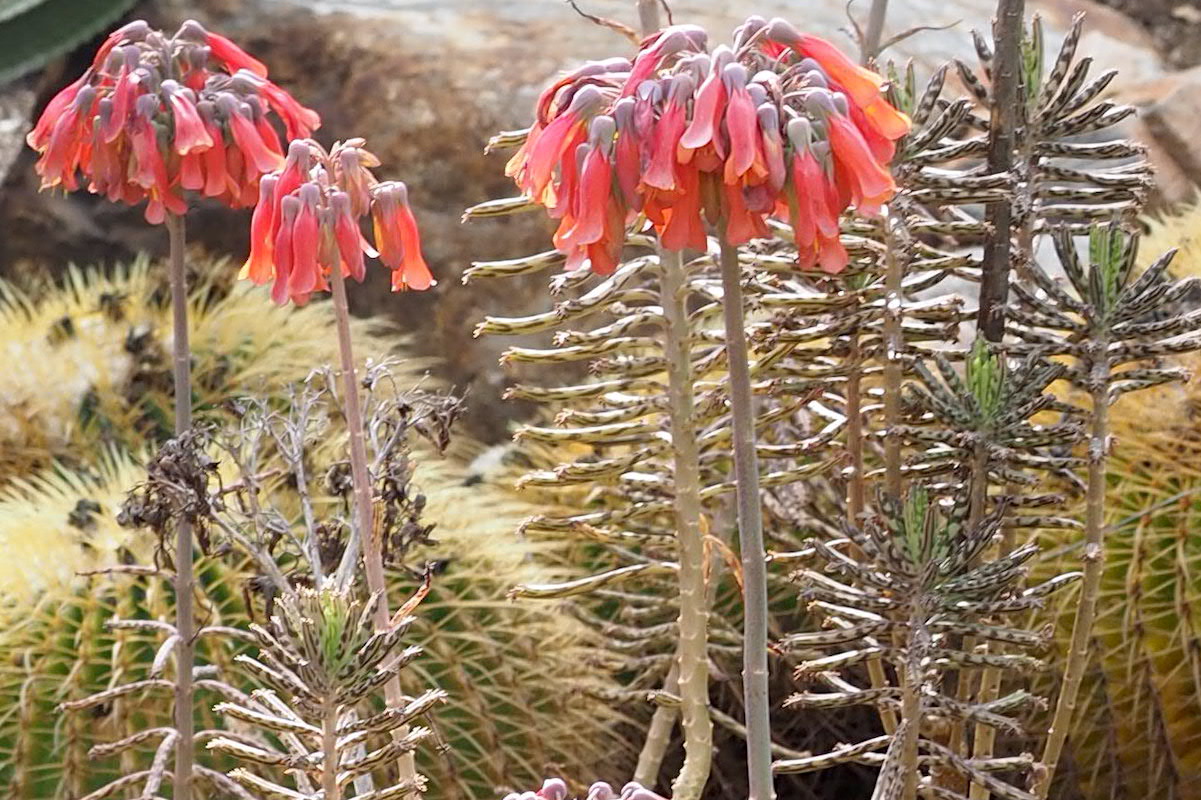
Recognize and Avoid Weedy Succulents
Here you'll learn about and recognize succulents and cacti that become weedy, invasive nuisances if you make them too happy, and what to do about them. Keep in mind---as I explain elsewhere on this site---that your region, your garden's microclimates, and the time of year make a big difference as to which succulents are ideal or pose potential problems.
Avoid weedy succulents
Controlling invasive succulents can be as simple as not growing them to begin with. (How do you know which ones? Well, keep reading!) Unlike annual weeds---which sprout in spring and are suddenly everywhere---most succulents are perennials.
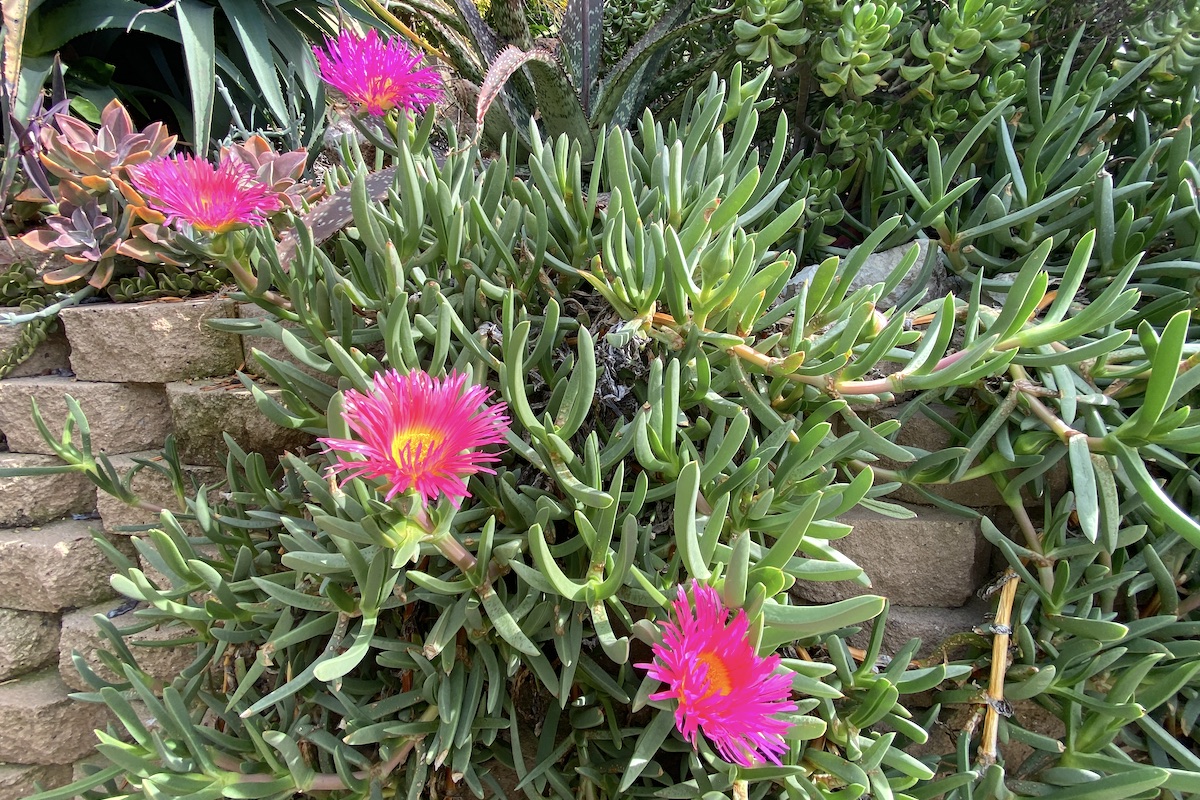
Carpobrotus edulis (pickleweed, ice plant), planted extensively by CalTrans on freeway embankments, is native to South Africa. It's invasive along coastal California, causing instability of fragile bluffs.
Like all plants, succulents bloom, but not necessarily annually. When they do flower, they typically don't send forth a lot of seeds. Nor do their seeds always sprout (most don't).
A "Good" Succulent Weed

Purslane is a succulent weed worth having.
Purslane (Portulaca oleracea) is both a vegetable and an annual weed. The taste is similar to watercress, so use it as you might spinach or lettuce. It's loaded with vitamins, minerals and antioxidants, and is higher in Omega-3 fatty acids than other greens. I occasionally run across it when weeding my garden, so do watch for it in yours. Or start it from seed. Use it as an ornamental filler for succulent container gardens, hanging pots and window boxes. Discover more edible succulents.
Unwanted pups: What to Do
Succulents that spread by underground runners---roots that grow parallel to the soil, just under the surface---produce clones that turn green (photosynthesize) when they break into sunlight. Parent roots, like umbilical cords, feed the offspring until they're established.
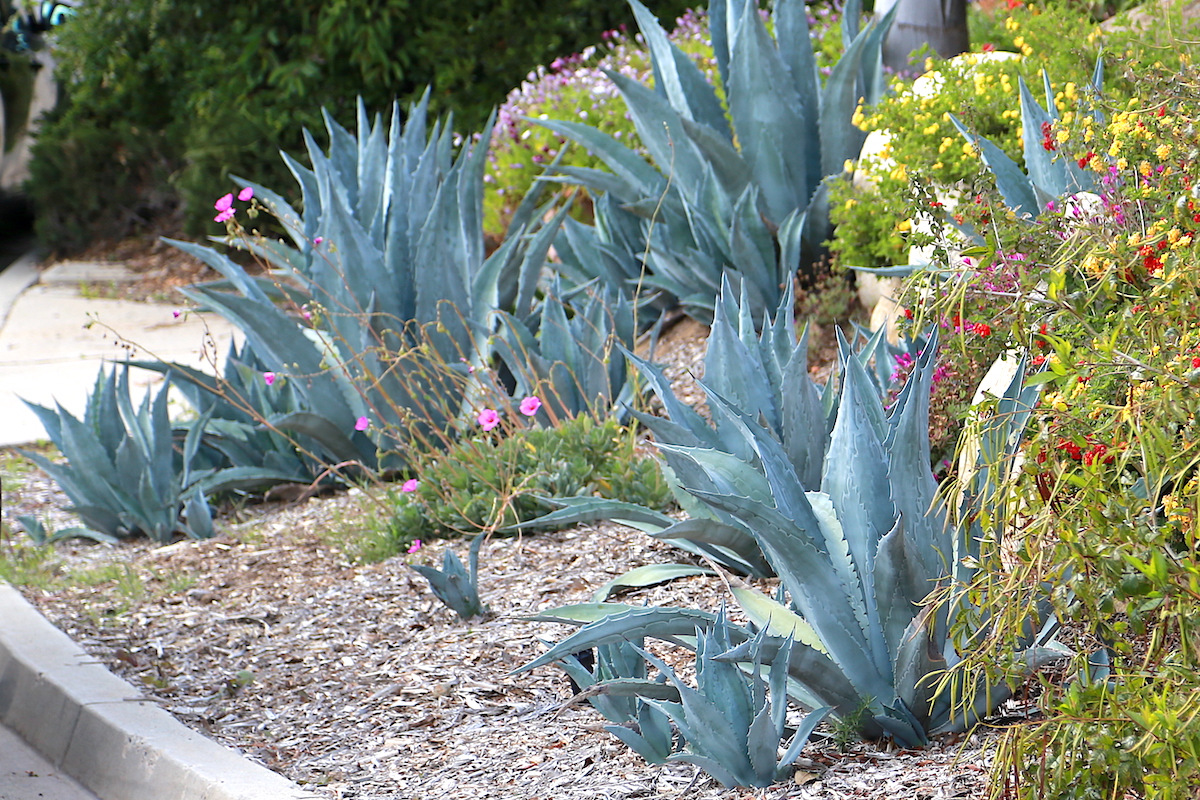
Agave americana attempts to take over a streetside landscape
Pups of small succulents such as haworthias and dwarf agaves are seldom a problem, in fact, are usually welcomed.
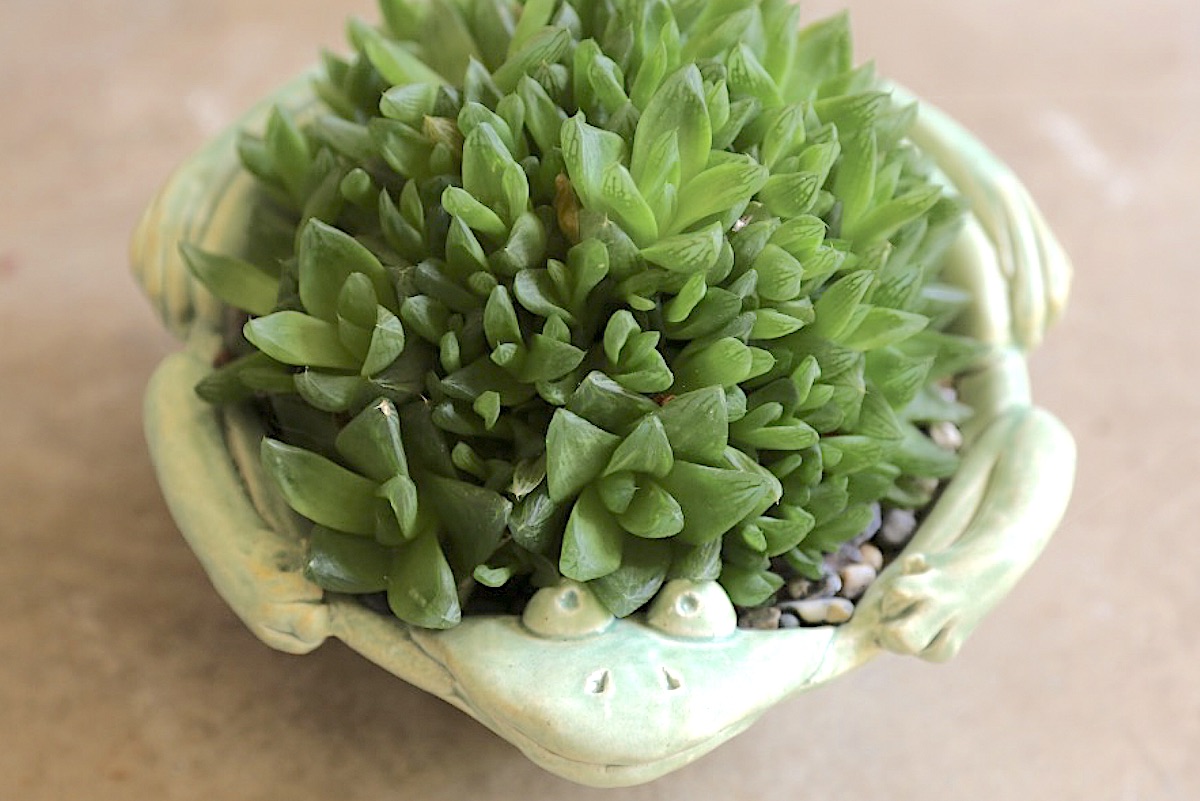
Haworthia retusa spread to fill a frog pot. Yay!
However, pups of large succulents have to be dug up if unwanted. This tends to be typical of large agaves.
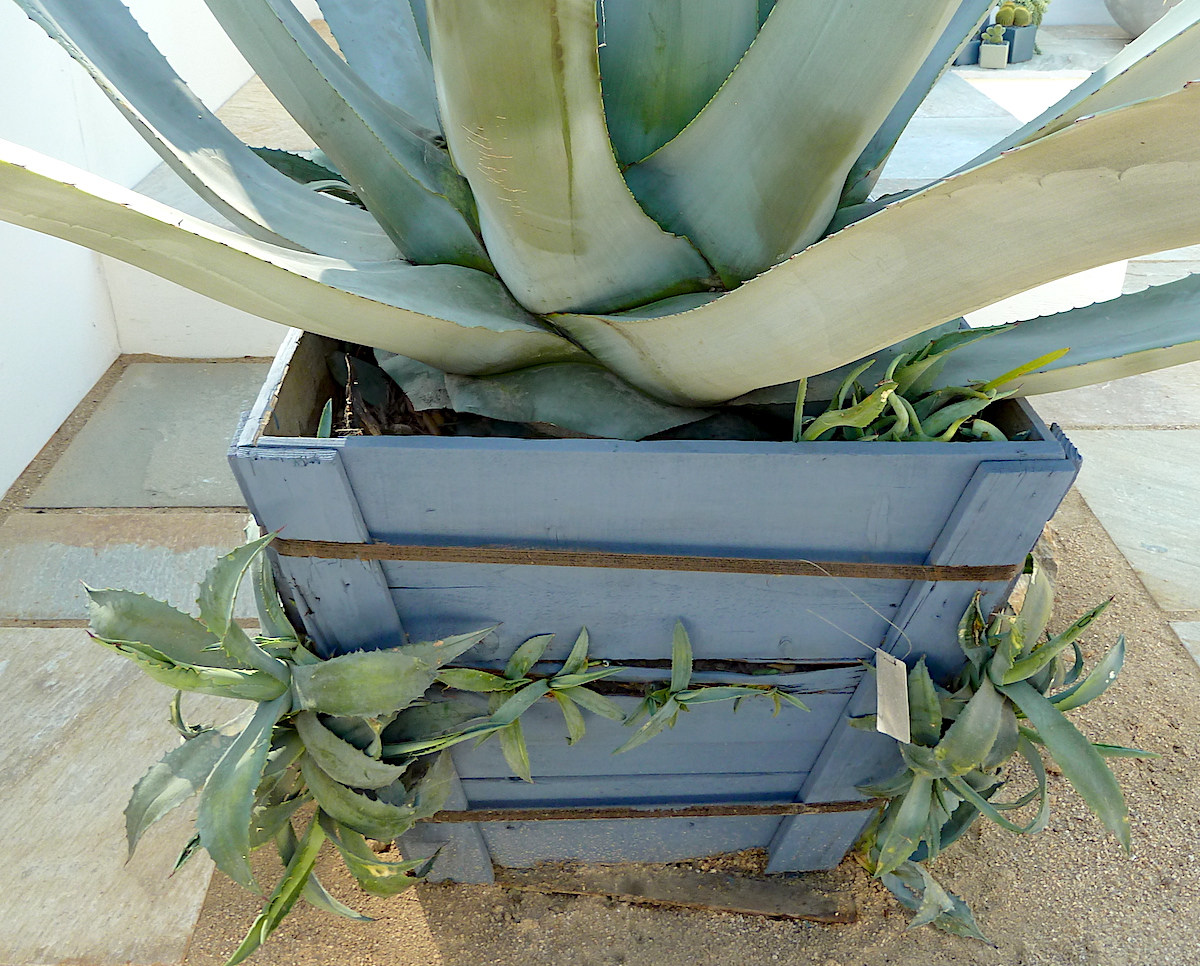
Agave americana pups eager to escape from a pot
Like a protective mama bear, a mother agave has claws---thorny spikes along leaf margins. These make it challenging to remove offspring beneath Mom's leaves. Don't delay pup removal; all too soon they're big enough to fight back.
Most agaves pup. Among those less prone to do so are Agave victoriae-reginae, Agave 'Blue Glow', Agave guiengola, Agave ovatifolia, and Agave 'Sharkskin'. Learn more about agaves on this site and in my YouTube video: Agave Essentials and Essential Agaves.
Meet an invasive aloe
A common aloe that propagates by underground runners is Aloe maculata (formerly A. saponaria). About a year after planting it in a flower bed, I found pups three feet away. The soil was soft and friable, so I'd grab a pup, pull on it, and along with it came a long lateral root leading back to Mom...who looked the other way.

Aloe maculata (saponaria)
I moved the colony to a less hospitable part of the garden and planted it in native soil (clay and decomposed granite). They've been there ever since, spreading much more slowly. Because they're free for the asking and not especially attractive (except in bloom) I call them "trash aloes."

Aloe maculata (Aloe saponaria) is one of the few midsized aloes that spreads via underground runners
Too many offsets?
Fairy crassula (Crassula multicava) grows offsets (baby plants) on its flower spikes. I produced an article and video about it a few years ago: Grow Shade-Loving Fairy Crassula: A Succulent Ground Cover You'll Love.
A recent comment on my You Tube channel surprised me, but perhaps it shouldn't have:
Tiny plants on floppy bloom spikes form at the base of dainty fairylike flowers. As these grow, ever-lengthening stems lower the plantlets to the ground. If they land or fall off on good soil, they may take root.
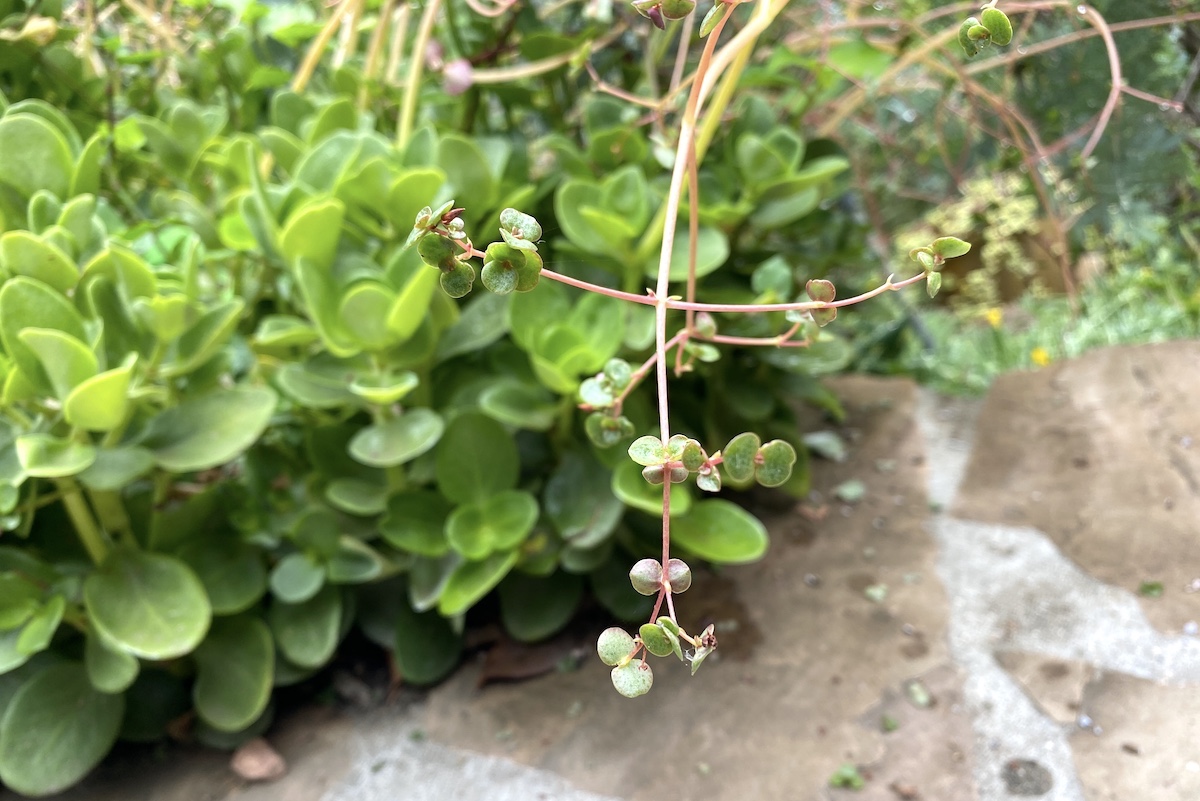
Fairy crassula (Crassula multicava). Tiny plants grow on flower stems.
It's a brilliant strategy: The offspring---now a foot or so from their parents---don't compete with them for light or nutrients. Hence, a fairy crassula colony has the potential to spread endlessly.
Mother-of-millions kalanchoe
Like fairy crassula, these produce plantlets that drop off and root. Unlike fairy crassula, which produces plantlets on flower spikes, those of mother-of-millions fringe the leaves.

Kalanchoe delagoensis (tubiflora) is not a weed in my garden, alas.
Tall, pendant, tubular orange-red flowers are a bonus that makes the plants' weedy quality worthwhile (especially for those of us who have trouble growing them). Typical of kalanchoes, they prefer a maritime climate.
Succulents that break apart and root
Stem succulents start readily from cuttings, but most don't fall apart in order to do just that. These cacti are prized in some regions, reviled in others:
Cholla cactus
Eve's needle (Opuntia subulata or Austrocylindropuntia subulata) is my least favorite succulent---possibly my least favorite plant. It grows vigorously, isn't choosy about soil or other conditions, and falls apart if someone sneezes 10 feet away.
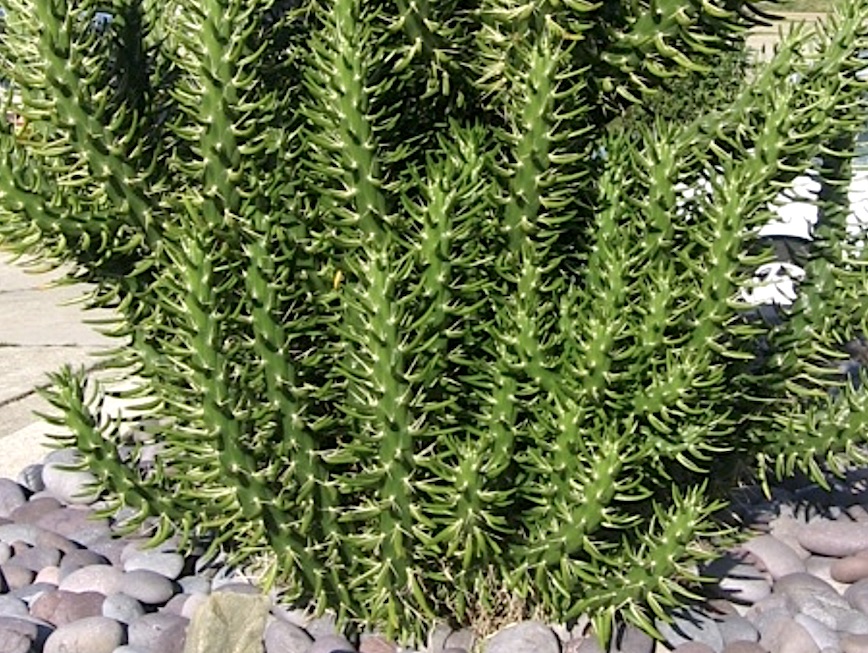
Eve's needle Opuntia subulata (Austrocylindropuntia) in a residential garden
Eve's needle has vicious, concealed, hooked spines that latch on to anything they can, thereby traveling with the victim and leapfrogging the colony. This is what chollas do---a common name is "horse cripplers," but Eve's needle is especially happy west of its native desert habitat. Unwitting homeowners have spread it throughout Southern California.
If you see Eve's needle in a nursery, don't buy it. If you own a nursery, please don't sell it. If you already have it, get rid of it; all too soon, it'll be tapping on your windows.
Opuntia (paddle) cactus
The many species of Opuntia have in common pads shaped like ping-pong paddles that grow and spread one from the another. Each pad is capable of rooting where it falls, not merely from the point where it was attached, but also from any of its areoles (growth tissue at the base of spines).

Opuntia macrodasys, sweetly labeled in US nurseries "angel wings" and "bunny ears," is "blind cactus" in Australia. Cattle that consume it go blind after getting its tiny glochids in their eyes.
Native to the desert Southwest and Mexico, opuntia has many uses, from edible nopales to security fencing. So there are "pro's" to its "cons." However, some species are causing major problems in Australia, where no cacti are native. I found an interesting list of those that are harming Australia's economy and therefore are illegal to sell or own, on the Queensland Government site.
Euphorbia tirucalli 'Sticks on Fire'
It distresses me to include a gorgeous succulent, but this one has outworn its welcome. Specimens that start out manageable grow too large, then endanger owners and gardeners attempting to trim or remove them.
Milky latex sap that drips freely is sticky and caustic. An allergic reaction to it can send people to the hospital, especially if they get it in their eyes.
Yet, as noted earlier, one person's weed is another's treasure. This YouTube comment-question puts it into perspective:
Yuccas
You don't see yuccas springing up in gardens where they weren't planted. These super tough succulents do the opposite: Sit quietly in situ and grow and grow. (I'm referring to Yucca species, not ornamental cultivars such as 'Bright Edge' and 'Color Guard', which stay manageably small.)

Immense yucca in a residential landscape
After a decade or so, their swollen bases may encroach upon and split the seams of walls, terraces or (God forbid) pipes and your home's foundation. I have no idea how old the magnificent Bay Area specimen is in the photo, but I'm guessing it was planted well over a generation ago. Hopefully it won't cause trouble; it seems far enough away from the house behind it.
Know of a weedy succulent I haven't included? Do tell us about it in a comment below. And I'd be grateful to know your own experiences with any mentioned above!
Related Info on This Site
Dangerous Succulents: Grow with Caution
Before planting spiny succulents, weigh the pros and cons. Although they have a certain beauty, they can be dangerous and devilishly difficult to remove. Know how large one gets and position it where it can’t harm you, kids, pets, or passersby.
25 Succulent Mistakes and Solutions
My what-not-to-do’s are simple to avoid, but not necessarily easy to remedy. A smart succulent owner learns what can be expensive to fix, might cause prized plants to look dreadful, and could even kill them.
How to Prune and Handle Euphorbia tirucalli ‘Sticks on Fire’
In both English and Spanish, landscaper José Arias explains and shows how to prune and handle Euphorbia tirucalli ‘Sticks on Fire’, a beautiful succulent with toxic, milky sap.
Agave Dermatitis: How harmful is agave sap? Are you susceptible?
You’re already wary of poison oak, cactus glochids and the milky sap of euphorbias. Add agave sap to the list. In susceptible individuals, it causes the skin condition “agave dermatitis.”



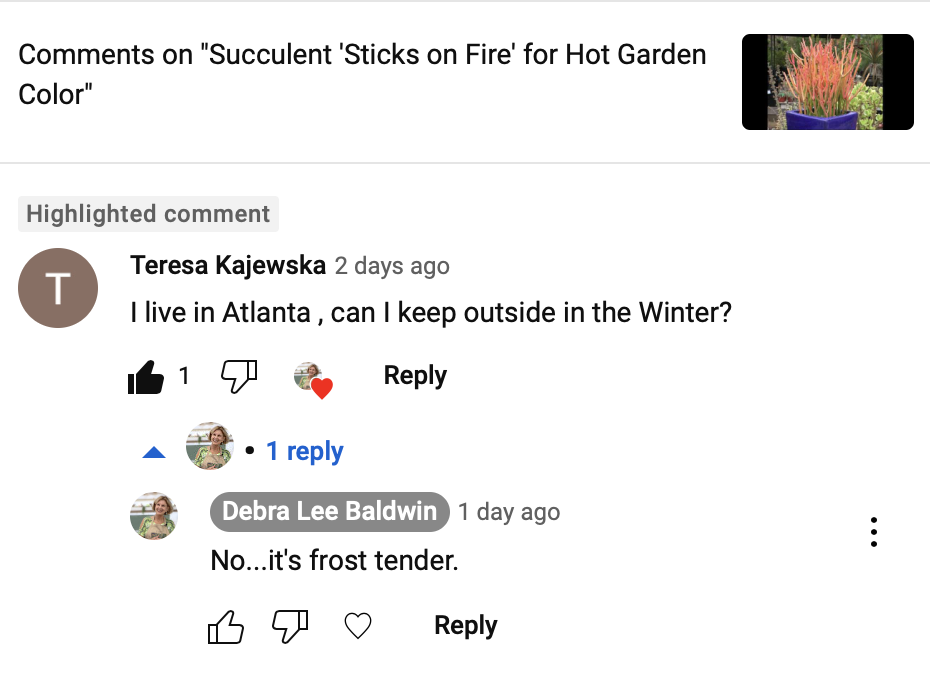
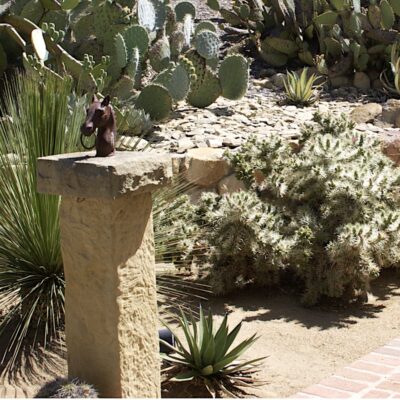



Your inclusion of yuccas on this list makes me wonder if only certain species are prone to getting this large. The ones I grow tend to be the hybrids, like ‘Bright Star’ and ‘Majenta Magic’. As of now, they are young and still manageable size, but I want to know if I may have to consider removing them before they become massive!
Oh, gosh, Michele, good catch on your part. I meant Yucca species only. I didn’t realize that what I said would imply that ornamental cultivars like those you mention are included. No indeed…they’ve proved to be outstanding additions to my garden, in fact I’ll be including them in a page on variegated succulents! (Will correct the post. Thanks again.)
Many succulents are weeds (officially) in Australia. Mother of millions and mother of thousands are invasive and cause problems for livestock who ingest them. All but one type of opuntia are banned, although many still grow them. I’m sure there are more, I can’t think of them right now though.
Hi Annette — Thank you! Btw, one of your compatriots emailed: “I think at some point people need to be educated about this ugly side of succulents because of human error. I’m an Australian and my Mum used to talk about farmers leaving their land and walking out in the decades before she was born in 1933. They gave up fighting and lost everything. Also, the prickly pear plant in Australia has now grown somewhat resistant to the moth’s lavae that was introduced to kill them. The moth was called Cactablaster. Something like that. Maybe some ecological problems ahead. Hopefully scientists will find something. Anyway, innocent looking prickly pear can turn into monsters!” She also sent this fascinating link to a page of historic photos.
Based on our experience, I endorse your assessment that no reputable nursery should carry Opuntia subulata/Austrocylindropuntia subulata without at least attaching a large warning sign.
One appeared in our SoCal dry landscape front yard about 6 years ago. We didn’t plant it, and have no idea where it came from. We tolerated it while it quickly grew to a few feet tall because of the lovely deep pink flowers. However, the plant quickly expanded, despite vigorous pruning, to more than 6 feet tall with a diameter of more than 5 feet. It is easy to see that it’s completely unsuited to a home garden where any animal l (including humans) might get near it. The thorns range from less than 1/2 inch to more than 2 inches long, and are wickedly sharp and barbed. Barely brushing against any part of the plant will result in at least one thorn firmly embedded in your body, once through a leather shoe. In addition, This monster expands in size exponentially each growing season while it drops chunks of itself in a wide radius.
We’ve decided this plant is completely unsuitable for a suburban landscape, and are now removing it – a difficult, tedious project due to the thorns and its habit of tossing large pieces of itself at us while we’re hacking at it with long handled tools.
Thank you for taking the time to warn your readers about this garden horror.
What a cautionary tale! Thank you for sharing it. Your writing is delightful, btw. ;+)
None of these succulents and cacti are nearly as undesirable and unrewarding as those nasty junipers we all inherited. It was a beautiful day when the last one was removed on my property!
Hi Connie — If anyone who sees this has junipers, don’t prune them after winter rains. They’re engorged with sticky sap that’s really hard to remove from clothes, pruners and hardscape. (I learned the hard way.) Even when on the dry side, you’ll need a product like Goo Gone.
I think this is my favorite Stuff I Wish I’d Known Sooner thread. I have had to remove a Euphorbia ‘Sticks on Fire’, an Agave americana, and an Eve’s Needle cactus for the exact reasons you list, Debra. Thanks for doing this service for those starting out growing succulents.
By the way, I doubt anyone has grown the ubiquitous weed spotted spurge (Euphorbia maculata) for ornamental value, but it’s in our gardens nevertheless. I call my endless perennial battle with this supine, matted weed the Scourge of Spurge. Compulsive weeding remains my go-to remedy for it, but I’ve found a propane torch judiciously deployed vaporizes the many seeds, too.
Nothing like hindsight! I too have Euphorbia spurge, but I think it must respond to pre-emergent herbicide because it’s not a big problem. Tim, dear one, please reassure me you don’t live in a fire-prone area (like mine). A blowtorch…!
Thank you , Debra, for your kindly solicitude, but not to worry. I observe all standard precautions, including never using my propane torch wand on a windy day. The only targets are the spurge, and my property is devoid of dry brush or in fact extraneous vegetation of any kind. The neighbor’s yard is covered in lush grass. I always keep a garden hose at hand and promptly soak any torched area thoroughly.
I do hope I’ve not outed myself as a renegade in your eyes. I use landscape fabric, too.
Aieee! Landscape fabric! Where is a bulging-eyed or screaming emoticon when I need one? All kidding aside, Tim, anyone who makes me LOL could never be on my nix list. Moreover, imagining you going around your garden scorching spurge as though it were creme brûlée delights me too much to seriously think you might set Southern CA on fire.